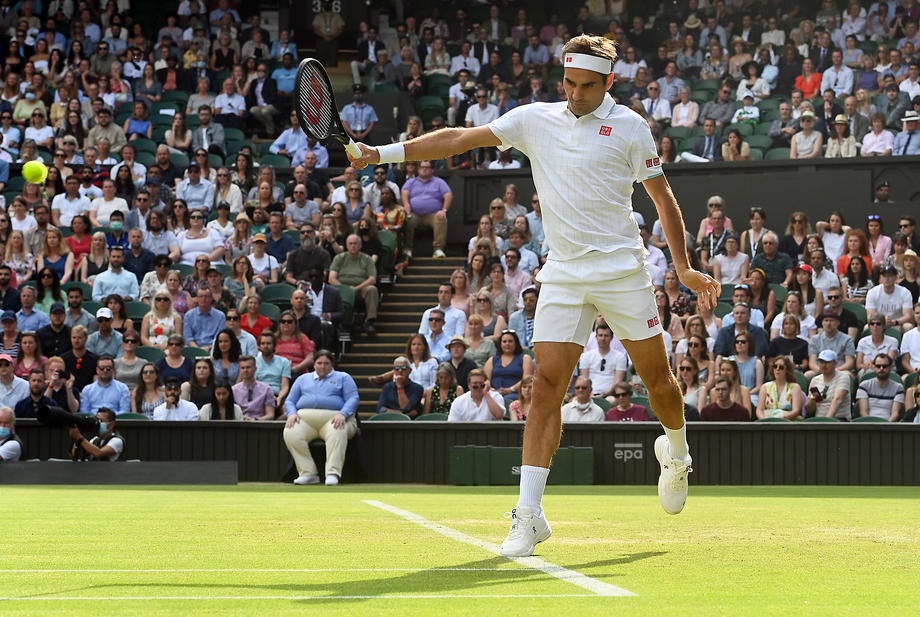- Taylor Fritz to Play Opening Match February 13 in Historic Delray Beach Open Three-Peat Quest
- Stars Join Forces for Eisenhower Cup Return to Indian Wells on March 4
- Ken Thomas Broadcasting from Georgia’s Rome Tennis Open
- Solinco Launches All-New Whiteout V2 Racquet
- Stringlet: Serving Up Tennis Inspiration With A Twist
- Davis Cup qualifying to feature Brazil vs. France and Spain vs. Switzerland
- 2025 US Open Expands to Sunday Start
- Tennis Channel To Broadcast U.S. Davis Cup Qualifier vs. Tawain
- Stefanos Tsitsipas Receives Rotterdam Wild Card From Richard Krajicek
- Tien and Basavareddy to Play Delray Beach Open Qualifying
- Australian Open Tennis 2025 Ends with Madison Keys and Jannick Sinner As Winners By Alix Ramsay
- 2025 Australian Open Final Draws
- Jannik Sinner Sweeps Alexander Zverev for Second Straight Australian Open Title
- Ricky’s pick for the Australian Open final: Sinner vs. Zverev
- Australian Open Draws and Order Of Play for Sunday, January 26, 2025
Experimental Davis Cup / Kosmos Kup • Tennis In Madrid Is Won By Rafa And His Team And Home Ground
- Updated: November 24, 2019
By Alix Ramsay
And so it is over. We have survived – just – the new version of the Davis Cup finals and it is time to go home.
In the space of one week, 18 nations have played more Davis Cup tennis than they would normally expect to play in a year, they have produced some moments of magic, some moments of madness and seven days of nail-biting ties.
Most of the ties have come down to the deciding doubles – an unexpected bonus of the new format which could, potentially, have relegated the doubles to the status of forgotten extra – and no one has felt safe until the last ball has been struck. The tennis, then, has worked like a dream.
The supporters have come with their flags and their banners, their drums and their trombones (and try fitting one of them in the overhead locker or underneath the seat in front of you on the long flight from Kazakhstan) and they have done everything in their power to create an atmosphere.
Talking of the Kazakhs, who knew that their national bird was the golden eagle? And who knew that some brave soul would spend the duration of his stay in Madrid dressed as same, complete with beautifully crafted eagle’s head and beak. Or that his only view of the tennis was through said eagle’s left nostril. But we digress…
The players have brought passion and pride to every match. They have sweated and grafted, they have jumped for joy and sobbed like children depending on their results, and then they have come back the next day to do it all over again. Why? Because it is Davis Cup and that is what Davis Cup is all about. It always was and, provided Kosmos do not find a way to sell it to the highest bidder, it always will be.
Ah, but what Kosmos have planned for us in the future is anyone’s guess. Without rowing back over the organisational cock-ups and catastrophes that have plagued the event from the moment the doors opened (at least they managed to do that bit without too much drama), the structure of the competition itself needs serious work.
First of all, there is the whole business of the “neutral venue”. Most every player in Madrid has said, sadly, that they miss the old home and away ties that made the Davis Cup special. A packed home crowd cheering and singing after every point could bring a champion’s performance from a journeyman player and turn him into a national hero. But those days had to be sacrificed for the Kosmos project.
And yet Spain were playing at home. Spain played five ties in front of 12,500 cheering, singing home fans. Somewhere in that throng were the supporters of the opposing team, but they struggled to make themselves heard.
When Britain faced the home team on Saturday night, the LTA bought 975 centre court tickets and offered them, free of charge and on a first come, first served basis, to any British fan who could get themselves to Madrid. And come they did. And shout and cheer they did. But it was still a home tie for Spain.
Alas, the other ties that Britain played on the smaller courts against the Netherlands, Kazakhstan and Germany were not so well attended. The hard-core travelling fans (ours are called the Barmy Army, copying our cricket fans) made themselves heard, but their songs and chants echoed around half-filled halls. That is not the Davis Cup that we know and love.
“The most important thing about Davis Cup is obviously trying to maintain the atmosphere,” Leon Smith, the GB captain, said. “That’s what everyone will talk about. And I’m sure there’s going to be a huge amount of feedback, strategy sessions, brainstorming about how to mitigate the likelihood again of having crowds that are 30 per cent, 40 per cent.
“I think there are other ways to be creative about how we help each federation to get fans here. I think what the LTA have done today is exceptional.
“Whether there are ways at looking at that to say, ‘why doesn’t that become the norm that there’s X amount of investment given to each federation to get a core group of fans?’. If every nation was able to do that, I think the atmosphere would be really good.”
Part of the problem is having a week-long team event. In the old format of the Davis Cup, the fans only had to miss one day of work – Friday – as they headed off for a long weekend. Taking a full week off to go to the “neutral” venue in the hope that your team gets through to the latter stages is taking a big – and expensive – gamble with your valuable vacation days. But those who only book for the group stages leave their teams fan-less in the quarter-finals and beyond.
As for that “neutral” venue – the Caja Magica is simply not big enough. Playing six ties on three courts just does not work. It is insane to ask players to put in an eight-hour (or longer) shift starting at 6pm after the day session is over. The downside to Spain being the home side was that they were the main draw for the night matches. They would win in the early hours of the morning, they would get to bed at 5am and then they were expected to come back and do it all again the next day.
The fact that some teams played on the opening day and then had days off through the week while others started on Wednesday and had to play back-to-back matches was also hugely unfair. Surely, everybody should start at the same time and should have the same advantage of rest days mid-event.
The whole concept of having wild cards for the finals – Serbia and France in 2020 – also devalues the competition. Either a team is in the finals on merit, having won qualifying ties or by reaching the semi-finals of the previous year’s finals, or it isn’t. Simple.
It is the same with the business of qualifying for the knock-out stages. Why do some teams, winners of their group, have to face other group winners in the last eight while some other group winners get to face a runner up? That does not seem fair.
The new Davis Cup is in its infancy and there were always going to be teething problems. But in order to fix the glitches, Kosmos needs to listen to the people who know: players, federations, captains…dare we suggest the media? They could start by talking to the ITF – they, at least, know how to stage a Davis Cup final; they’ve been doing it for 118 of the past 119 years.
The competition is too precious to lose. The new format is certainly exciting but it needs to be sustainable and fair – and it needs to have decent infrastructure to support it. The hopeless website and app, the scoreboards displaying the wrong information, the advertising hoardings going into meltdown around the courts – all of these issues were avoidable with proper planning and preparation.
As a last farewell to the Caja Magica, the phone buzzed. It was a message from that infernal app informing us that we could follow Spain against Canada via the new (and, you could only hope, improved) app, available now from the Google store. At the time, Spain had won the first rubber of the final and Rafa was 2-1 up in the second. It was 7.30pm on the last day. Somehow it seemed like the perfect end to Kosmos’s week.
So, we have survived the inaugural event but the question remains whether the Davis Cup will do likewise. Will it be overtaken in a merger with ATP Cup? Will it stand alone with its proud history and put the ATP Cup to shame? Or will it just fizzle out thanks to ineptitude and incompetence, a lack of fans and a lack of interest? We wait to see.






